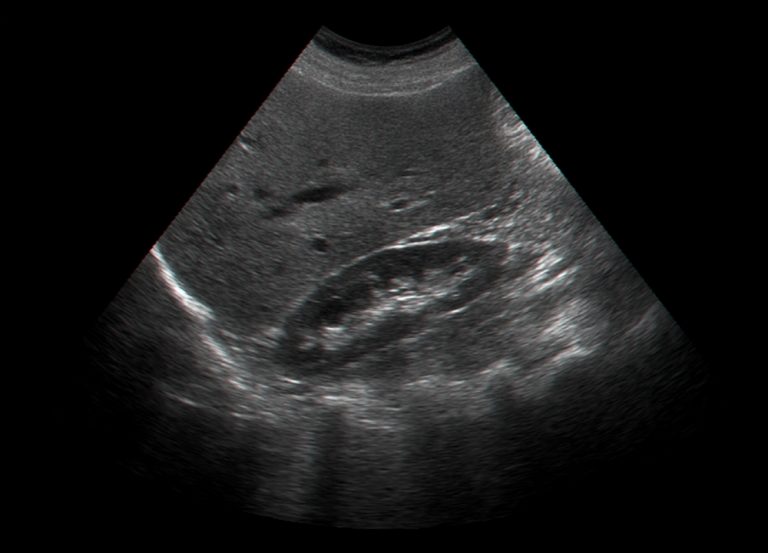Ultrasound is a type of imaging that uses sound waves to create images of organs inside the body. It is commonly used to diagnose and monitor gynaecological conditions. It is a safe, non-invasive imaging modality that can be used to detect a range of conditions, such as ovarian cysts, fibroids, and endometriosis.
This guide will provide information about the benefits and potential risks of ultrasound for gynaecological conditions, as well as information about the procedure and preparation for it:
What is an Ultrasound?
An ultrasound is a type of imaging technique that allows doctors to evaluate organs and other structures within the body by using high-frequency sound waves that create images. The images created by ultrasound are called sonograms, and they can provide valuable information that helps physicians diagnose gynaecological conditions such as endometriosis, pelvic inflammatory disease (PID), fibroids, and ovarian cysts.
Ultrasound is an acoustic technology that uses sound waves to create an image. Unlike X-rays and computed tomography (CT) scans, which use radiation to generate an image, ultrasound technology does not expose the patient to any radiation. Additionally, ultrasounds are very safe—it has been used extensively since its introduction in the 1950s and is noninvasive and painless for patients who have it performed.
Ultrasounds often include Doppler imaging, a type of stroboscopic imaging which gives information about blood flow through veins or arteries. Information gained from this imaging can be used to diagnose a variety of diseases including cardiomyopathy or coronary artery stenosis.
How is an Ultrasound Used in Gynaecology?
An ultrasound is a safe, non-invasive imaging test that uses sound waves to produce an image of the organs and structures in the body. It is used to diagnose several gynaecologic conditions, including but not limited to, abnormalities of the uterus or ovaries, endometriosis, fibroids as well as evaluate a pregnant woman’s progress through her pregnancy. Abnormalities can be seen quickly and from different angles.
The advantages of using ultrasound in gynaecology are numerous: it has no known side effects, it is generally painless and results are available within minutes. In addition to making diagnoses quickly and easily, ultrasound imaging can monitor a patient’s overall health during pregnancy, providing confirmation that foetal development is occurring on a normal timeline and detecting any anomalies at an earlier stage than other tests might. Ultrasound examinations are also commonly used to guide doctors during needle biopsy or aspiration procedures.
Preparation
Before undergoing an ultrasound scan, it is important to understand the procedure and to prepare accordingly. In this section, we will discuss what you should know before an ultrasound scan related to gynaecological conditions, including:
- Which tests may be done
- What to expect before and during the scan
- Any special instructions you should follow.
What to Expect Before the Exam
Before having a scan, it is important to understand the procedure and what will be involved. Make sure you tell your doctor about any medications that you are taking as this could affect the scan. Drink plenty of fluids to ensure you have a full bladder before your exam as this will provide better images and make the scanning easier.
It is normal to experience some discomfort during the exam such as slight pressure or possibly cold temperatures, but it is important to let your doctor know if you feel any pain. The patient should also empty their bladder shortly before the test begins and they are asked to lie down on an ultrasound bed with their legs slightly apart. Afterward, patients can either drink water or return home if they desire.
The exam should take no longer than 30 minutes, depending on which areas are being studied and other individual factors. Inform your doctor if you experience any symptoms such as burning sensations during or after the scan, as well as any pain that persists for several hours after the procedure has been completed.
How to Prepare for the Exam
In order to prepare for your imaging exam, it's very important that you follow your doctor's instructions carefully. Before the procedure begins, some conditions require a urine test, to look for any signs of infection or other issues. You may also need to fast for 8-12 hours or take laxatives or an enema in order to minimize the effects of bowel gas.
Your physician will give you complete details on how to prepare and timescales. During the ultrasound itself, you will have gel applied to your skin which enables the soundwaves to travel. Usually this gel is not necessary after a short period of time post-exam, but showering and washing your hands afterwards is always recommended if possible.
Depending on what kind of gynaecological issue you’re being investigated for, it might require additional preparation – such as having an uncomfortably full bladder. Asking your physician ahead of time can help alleviate any anxiety or concerns before the exam takes place. It’s normal if you feel nervous before procedures like these; talk with your doctor and they can answer any questions or concerns that you might have about ultrasound imaging exams.
The Exam
A pelvic ultrasound can provide a doctor with important information about a patient's reproductive organs. During the ultrasound, a technician or doctor will use a transducer, or hand-held device, to apply high-frequency sound waves to the pelvic area.
These sound waves then create an image of organs and tissues in the area, providing the doctor with an invaluable tool for assessing a patient's condition.
What Happens During the Exam
During a gynaecological ultrasound, a transducer which is an instrument that transmits sound waves will be gently passed across your abdomen to create real-time images of the inside of your body. An ultrasound gel is used to enhance the transmission of sound waves during the exam.
The exam will typically take anywhere from 20 minutes to an hour and you may be asked to change positions so that different views can be taken of your organs. Your doctor may also ask you to drink up to one litre of water before the exam which helps fill up your bladder with giving a clearer picture.
During the exam, there may be various pauses as different views are taken or for some repositioning. It’s important to remain still during these periods so that accurate images are produced. You should not experience any pain during this procedure. However, if you do experience discomfort, please inform your doctor immediately.
Once all necessary photographs are taken, you can go home and your doctor will interpret the results and share them with you at a future appointment.
What Types of Images are Produced?
An ultrasound exam produces real-time images of the pelvic organs, including the uterus, ovaries, cervix and vagina. It can detect abnormalities in these organs as well as increased blood flow indicative of infection or inflammation.
The type of image produced during an ultrasound exam is determined by several factors, including the type and resolution of the ultrasound machine used, the depth at which the imaging is being done, and the technician operating it.
In a “black-and-white” scan, grey shades represent different densities of tissue and are generally used to assess anatomy (shapes), size and structure compared to normal values. Colour Doppler imaging detects changes in circulation based on relative movement and directionality on an artery or vein thereby determining their velocity (flow). This mode shows vessels that supply specific tissues or organs by producing a colour coded image in which different colours represent different direction differences or velocities within multiple vessels.
Power Doppler imaging helps to distinguish between active and stagnant flowing vessels with poorer spatial resolution but higher sensitivity to detecting slow flow that can not be detected by colour Doppler. It is commonly used in investigations of potential malignancy as it is able to detect subtle regions of increased vascularity within tumours that may otherwise be difficult to visualize using traditional methods.
Finally, duplex Imaging mode combines both black-and-white scan with either colour or power Doppler capabilities simultaneously for haemodynamic assessment.
After the Exam
After having an ultrasound for a gynaecological condition, your doctor will review the images to make a diagnosis. If needed, he or she will offer you a treatment plan based on your condition. It is important that you follow these instructions and make sure to schedule follow-up appointments.
In this section, we will discuss what to expect after the exam:
What Happens After the Exam
Once your gynaecological ultrasound exam is complete, the technologist will communicate the results to a radiologist. The radiologist is a medical doctor who specializes in interpreting imaging exams like ultrasounds, X-rays and MRIs. The report your physician receives includes the findings of your exam, as well as any other pertinent laboratory results.
Your doctor will review the report and send you written information about her findings, which may include information on how to care for yourself and any follow-up instructions she feels are necessary. Depending on the diagnosis, your doctor may want you to have additional tests or refer you to a gynaecologic specialist for further evaluation or treatment.
Although most patients are eligible for ultrasound exams, there are certain risk factors associated with them. If you have had any problems during pregnancy or have a family history of certain diseases, it’s important that your doctor discuss these with you before ordering an exam. It’s also important for your safety that you inform your doctor about any medications or supplements you’re taking and keep them up-to-date on any changes in your health status prior to each exam.
How to Interpret the Results
Ultrasounds are used to diagnose a variety of gynaecological and reproductive disorders. The radiologist will review the data from the ultrasound and create an official report for your physician. The report includes detailed images and measurements of the structures seen during the exam.
Your doctor will use this information to provide an accurate diagnosis and treatment plan for any conditions that were discovered during the exam. You can ask your doctor or technician to explain any findings, including what they mean for your health and if there are additional tests or follow up required.
It’s important to know that it is normal to require multiple exams before reaching a definitive diagnosis, as some results may be inconclusive or require further testing. Ultrasound imaging allows us to diagnose various conditions quickly and accurately, providing shorter wait times for initial test results and follow up exams. Your doctor will let you know when it’s safe to relax and when further testing is required so you can take comfort in knowing you are being monitored closely throughout the process.
Conclusion
Ultrasound is a non-invasive, safe and reliable imaging modality that is used for diagnosing and monitoring a variety of gynaecological conditions. It provides valuable information about the reproductive organs and can detect early signs of abnormalities. Ultrasound can also be used for procedures such as foetal interventions or biopsies.
In conclusion, ultrasound is an important tool for diagnosing and treating gynaecological conditions.
Summary of the Benefits of Ultrasound for Gynaecological Conditions
Ultrasound imaging is an extremely versatile form of medical imaging which has a variety of applications in gynaecology. The main advantages associated with ultrasound imaging in the context of gynaecological conditions are:
- It’s a non-invasive procedure, meaning it can be used to diagnose and monitor gynaecological conditions without the need for invasive surgical procedures.
- It’s highly cost-effective compared to other kinds of imaging technologies.
- It usually takes relatively short amount of time, making it convenient for both patient and doctor.
- It has very high accuracy rates when used to assess a wide range of gynaecological conditions such as endometriosis, ovarian cysts and fibroids.
- In comparison to X-rays and radiation scans, ultrasounds are considered safer during pregnancy as they emit no radiation (while radiation scans may risk harm to the developing foetus).
- It’s a relatively quick procedure with immediate results for both patient satisfaction and physician assessment so medications or follow ups needed can be identified quickly if needed or desired by the patient.
- Ultrasound affords potential diagnosis not available via any other form of medical imaging; examples include morphologic examination of certain reproductive organs like uterine fibroids which require an acute sense that only ultrasound can afford due to its highly spatial resolution capabilities; while MRI might suffice, MRIs are considerably more expensive and offer more data than is required in most cases amongst this specific subset among women's health related difficulties or issues that may require a more detailed ocular exam through ultrasound procedure.







